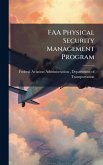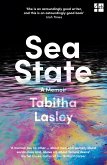The purpose of this research was to identify a way to insert market forces in the supply and demand relationship of air refueling to help decrease monetary costs. Specifically this research focused on answering two questions regarding the amount of money used to carry fuel that is scheduled to be offloaded but not taken by receiver aircraft and whether there is a program in place that can be used to help prevent excess fuel from being requested. These research questions were answered through a comprehensive literature review and analysis of one year's worth of local training sorties from an Air Mobility Command active duty KC-135 squadron. Use of the Transportation Working Capital Fund to pay for air refueling was shown to be a possible solution to bring demand more in line with the supply of air refueling assets and to bring more efficiency to the overall system. Specific monetary costs were identified and both the risks of keeping the status quo of the air refueling system and the risks of changing the system were identified and discussed. This work has been selected by scholars as being culturally important, and is part of the knowledge base of civilization as we know it. This work was reproduced from the original artifact, and remains as true to the original work as possible. Therefore, you will see the original copyright references, library stamps (as most of these works have been housed in our most important libraries around the world), and other notations in the work. This work is in the public domain in the United States of America, and possibly other nations. Within the United States, you may freely copy and distribute this work, as no entity (individual or corporate) has a copyright on the body of the work. As a reproduction of a historical artifact, this work may contain missing or blurred pages, poor pictures, errant marks, etc. Scholars believe, and we concur, that this work is important enough to be preserved, reproduced, and made generally available to the public. We appreciate your support of the preservation process, and thank you for being an important part of keeping this knowledge alive and relevant.
Bitte wählen Sie Ihr Anliegen aus.
Rechnungen
Retourenschein anfordern
Bestellstatus
Storno








